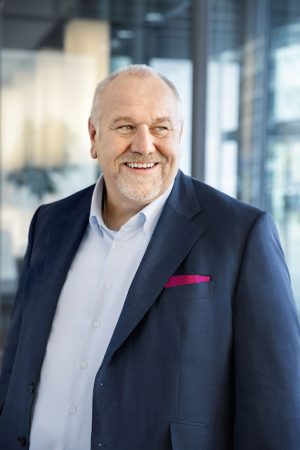
Endress+Hauser shows confidence
by CM Staff
Group holds its ground despite pandemic and starts 2021 with momentum

CEO Matthias Altendorf
Despite declining sales, Endress+Hauser maintained profitability at a high level and strengthened its financial power. The Group created new jobs and expanded its global sales and production network.
Endress+Hauser succeeded in protecting people’s health and continuing to provide solid support to customers, CEO Matthias Altendorf said at the annual press conference in Basel, Switzerland. “We helped to keep important areas of our daily lives running during the pandemic. Our work is important for our customers and for society.” Endress+Hauser products are used, for example, to produce vaccines; subsidiary Analytik Jena supplies PCR technology to detect the coronavirus.
Digitization played an important role, picking up speed during the pandemic. Customers have long been able to conduct everyday transactions via the Endress+Hauser website. The number of registered users on the platform doubled, and online business grew by 39%.
Nevertheless, the Group’s sales fell by 2.8% to 2.577 billion euros in 2020. However, this figure is heavily influenced by exchange rate developments. Apart from the Swiss franc, all major currencies depreciated against the euro. Without these effects, according to Chief Financial Officer Dr Luc Schultheiss, Endress+Hauser would have almost reached the previous year’s level in sales. “In local currencies, we are above the industry average and have performed well in the market.”
Individual regions, industries and segments developed differently. Of the three countries with the highest sales, only China achieved growth and is now Endress+Hauser’s largest single market. In Germany and the USA, on the other hand, sales declined. In contrast to process engineering, laboratory instrumentation recorded strong growth. Cyclical industries suffered in the crisis, while non-cyclical sectors were stable. “The broad backing in the market helped us,” said Matthias Altendorf.
Endress+Hauser’s profitability did not suffer last year. On the cost side, exchange rates had a positive effect in 2020, for example on material expenses. Because many business trips and activities were canceled, operating expenses fell. Personnel expenses grew at a below-average rate. Overall, operating profit (EBIT) decreased by only 1.9% to 337.1 million euros.
Because the financial result deteriorated somewhat, earnings before taxes (EBT) fell by 2.7% to 337.6 million euros in 2020. Return on sales (ROS) remained unchanged at 13.1 percent. Net income fell by 4.1
percent to 254.9 million euros due to higher fiscal charges. The Group is virtually free of bank loans. The equity ratio increased by 1.4 points to 77.0%.
The number of employees grew by 126 to 14,454 worldwide in 2020. Virtually all apprentices were offered a position after completion of their training. Endress+Hauser aims to increase the share of women in management positions to around 30 percent by 2030 – double the current proportion. The company had already significantly reduced its environmental footprint in recent years. In the pandemic year, carbon dioxide emissions fell further from 10.1 to 8.9 tonnes per million euros of sales.
In 2021, Endress+Hauser aims to grow in the mid-single-digit percentage range. The Group started the current year with momentum. In the first three months, incoming orders were above the company’s own targets as well as above the still strong first quarter of 2020. Exchange rates are again weighing on consolidated sales. In addition, the company expects lower profitability, as many savings of the last year were one-offs.
“The outlook continues to be characterized by uncertainty,” emphasized CEO Matthias Altendorf. In addition to further pandemic waves and new virus variants, the supply chain continues to cause concern throughout the industry, he said. Endress+Hauser is therefore increasing inventories and strengthening its supplier network. New efficient logistics centers have been put into operation in China and Germany